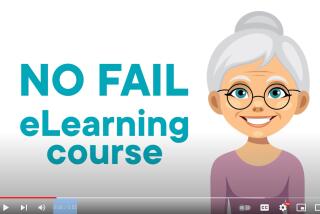THE GOODS : A Gradual Approach to Licensing Teen Drivers
- Share via
Next to a gun permit, one of the easiest to get and potentially most dangerous documents in the United States is a driver license.
Typically, states require applicants take a vision test, a simple written test and an around-the-block driving test most people pass on the first try.
But some safety groups are seeking to impose new licensing restrictions on teen-agers, the drivers with the highest risk of getting into fatal accidents.
“Before teen-agers get full driving privileges, why not restrict some of their privileges,” says Alan Williams, vice president for research at the Insurance Institute for Highway Safety. “Teen-agers have a higher rate of accident involvement.”
Newly licensed adolescent drivers have extraordinarily high accident rates compared to every other group. According to the Insurance Institute, 16-year-olds average 43.2 crashes for every million miles they drive; 17-year-olds have 30.3 crashes per million miles.
By comparison, the rate drops to about five crashes per million miles for drivers between 30 and 60 years of age. Even for drivers 76 and older, the rate rises to just 10 crashes per million miles.
After 16-year-olds get their licenses, they are free to drive at night, in snow, with a carload of their friends and in some states with the same limits as adults on their blood alcohol.
Safety advocates want to restrict teen driving privileges through a system of graduated licensing, a plan supported by the National Transportation Safety Board, Mothers Against Drunk Driving and the Insurance Institute, among others.
Williams suggests teen-age drivers be kept off the road during late hours, allowing them to get more experience in daylight before they are permitted to drive at night. Graduated licensing could also impose rules specifying near-zero alcohol levels for teen drivers.
Limits on the number of passengers a teen-age driver could carry might also be imposed under this system, since the majority of teen passenger deaths occur in cars driven by other teen-agers.
The restrictions would be lifted in stages as the new driver gains experience.
Although New Zealand, Canada and several European countries have introduced graduated licensing laws, no states have extensive restrictions on teen-agers. Under a federal contract, Alaska and North Carolina are devising a study program for such restrictions.
In the United States, 21 states, including California, have lowered the allowable blood alcohol levels for younger drivers. (Younger teens cannot drink legally in the first place, but underage-drinking laws are enforced less strictly than drunk driving laws.) Nine states have night driving curfews.
Another suggestion for reform would be to require more driving experience before granting a license. Evidence shows drivers who get licenses after a short-duration learners permit have higher fatality rates.
Delaware has one of the shortest learners permit periods, granting licenses to teen-agers after they hold a permit just two months. Delaware also has the nation’s highest per capita crash rates among 16-year-olds, more than 10 times higher than New Jersey, where teens hold learner’s permits an average of 6.9 months. Teen-agers would no doubt consider many of these proposals unfair. Millions of young people work after school or are responsible for helping others, so the idea isn’t to stop them from driving. The thrust of the reform movement is to find better ways to educate new drivers so they gain some experience that may prevent fatalities.
More to Read
Sign up for Essential California
The most important California stories and recommendations in your inbox every morning.
You may occasionally receive promotional content from the Los Angeles Times.













